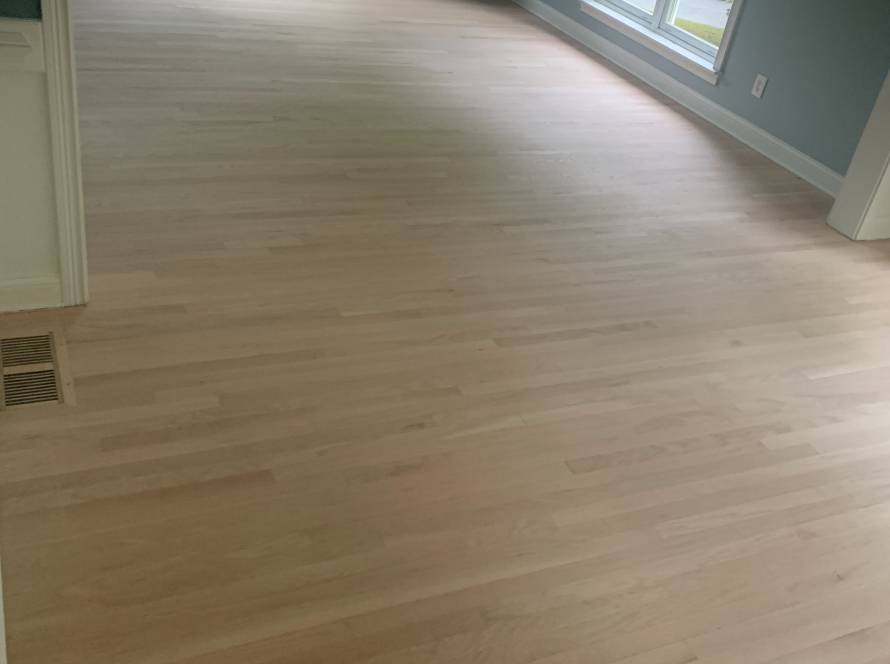When searching for “wood floor sanding near me” many homeowners are unsure how often they can sand their hardwood flooring without compromising its integrity. Whether you’re dealing with scratches, dull finishes, or years of wear, it’s crucial to understand how many abrasive treatment cycles your floors can withstand. In this expert guide, you’ll learn how sanding works, how often it’s safe to refinish, and the differences between hardwood floor resurfacing and refinishing.
1. The Basics of Hardwood Floor Sanding
Sanding removes the top layer of wood, along with any old finish, to reveal a fresh surface. This process can:
- Eliminate surface-level scratches
- Erase minor dents and discoloration
- Prepare the floor for a new finish or stain
However, since each sanding removes a small portion of the solid hardwood or engineered hardwood, there’s a limit to how many times it can be done.
2. How Many Times Can You Sand Different Types of Wood Floors?
Solid Hardwood
- Can usually be sanded 4 to 6 times during its lifetime
- Each sanding removes about 1/32″ to 1/16″ of wood
- Ideal for homes with pets, kids, or high foot traffic
Engineered Hardwood
- Typically allows 1 to 3 abrasive treatment cycles, depending on the thickness of the top veneer layer
- Not all engineered wood is created equal—consult a flooring professional to assess your specific product
3. Factors That Affect Sanding Frequency
The following variables influence how many times your floor can be safely sanded:
- Wood species (harder woods last longer)
- Plank thickness and wear layer depth
- Past sanding techniques and tools used
- The condition of the subfloor
- Whether reclaimed wood or original installations are in use
4. Signs It Might Be Time to Stop Sanding
Eventually, even the most durable floor reaches a point where sanding is no longer viable. Warning signs include:
- Visible nail heads or staples
- Excessive movement or creaking
- Warped or severely water-damaged planks
In such cases, it may be better to consider replacement or hardwood floor resurfacing instead.
5. Resurfacing vs. Refinishing: What’s the Difference?
The terms are often used interchangeably, but they refer to different services:
- Wood floor refinishing involves sanding the surface and applying a new finish
- Wood floor resurfacing typically includes repairing damaged boards, re-nailing, and minimal sanding
When comparing hardwood floor resurfacing vs. refinishing, resurfacing is a better option for heavily damaged or uneven floors.
6. The Hardwood Floor Sanding Process
Professional sanding typically follows these steps:
- Inspection of the floor’s condition
- Dustless sanding to remove the top layer
- Application of stain or sealer
- Finishing coats for durability and shine
Pro tip: Always work with experienced contractors by searching “hardwood floor refinishing near me” to ensure the longevity of your flooring.
7. Alternatives to abrasive treatment
If your floors are near their sanding limit, consider:
- Buffing and recoating for superficial wear
- Replacement of individual planks
- Upgrading to new timber floors in high-traffic areas
Final Thoughts: Sanding with Confidence
Knowing when and how often to sand your hardwood floors is essential to preserving their beauty and value. Whether you’re refinishing vintage reclaimed wood or maintaining high-end engineered hardwood, always consult local professionals.
For tailored solutions and expert advice, trust STI Flooring Deluxe—your go-to experts in wood floor sanding near me throughout Cleveland and Ohio.
Ready to revive your hardwood floors? Get a quote today for a personalized consultation.



